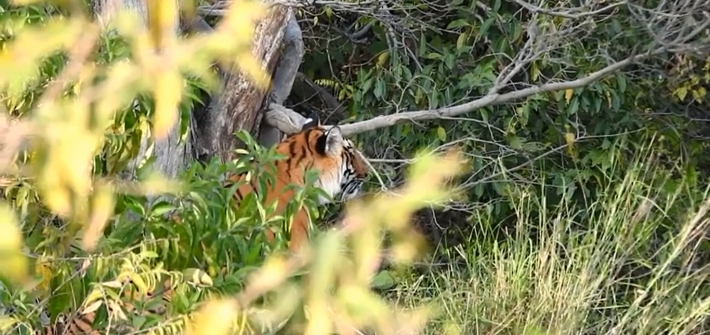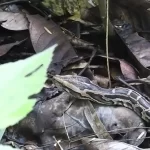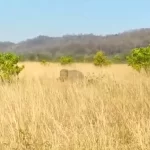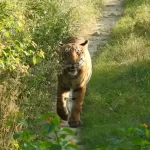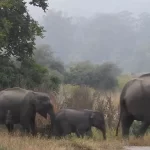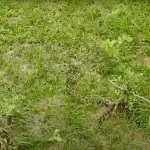By nature, tigers are shy creatures. The preferred habitat of tigers is forests with undergrowth and grasslands with tall grasses. In its natural habitat, coloration and stripe pattern of tigers helps them camouflage. When a tiger finds itself exposed to the human presence, it avails the nearest possible cover. Especially during the summer months, tigers […]
jimsjungleretreat
King Cobra in a forest stream
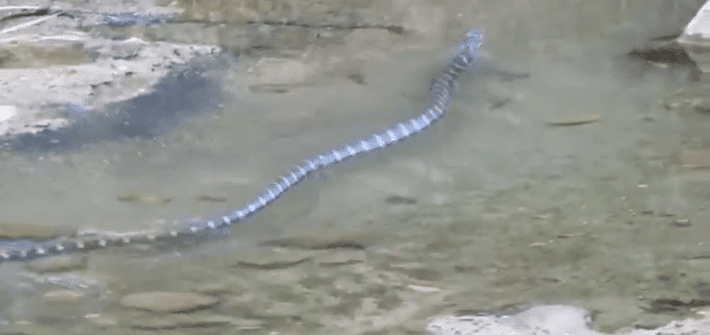
King Cobra is the largest venomous snake in the world, growing to a length of 19 feet in the wild. It is also the only snake in the world that is known to make its own nest. The female lays eggs in a heap of decomposing leaf-litter. When the eggs are about to hatch, the […]
Black-rumped Flameback drinking from a bamboo post
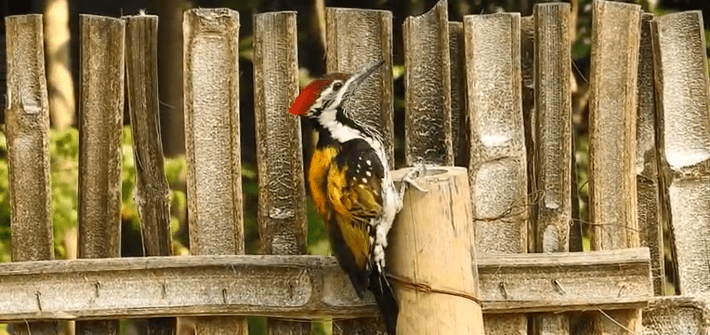
Woodpeckers are highly evolved predominantly insectivorous birds with several special physiological features adapted to suit their lifestyle. Their diet includes insects, especially wood-boring insects, grubs, spiders, ants, tree sap, nuts, seeds, berries, fruit, fruit sap, and flower nectar. Woodpeckers are known to hammer at the tree trunks to reach the insects hiding under the bark […]
Mud puddling Butterflies
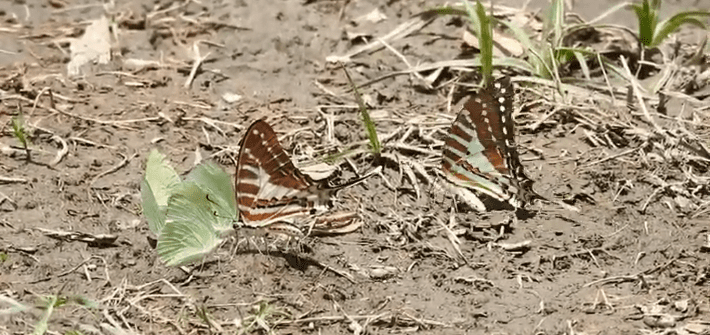
Mud puddling is an interesting behavior seen in butterflies whereas a congregation is witnessed on a damp muddy ground, on animal excreta, decomposing vegetation or flesh. The butterflies are known to obtain nutrients from these materials, using their tube like sucking organ called proboscis. As per a study conducted in Borneo in 1998, data was […]
Our mini dinosaurs – the Bengal Monitor at Jim’s Jungle Retreat
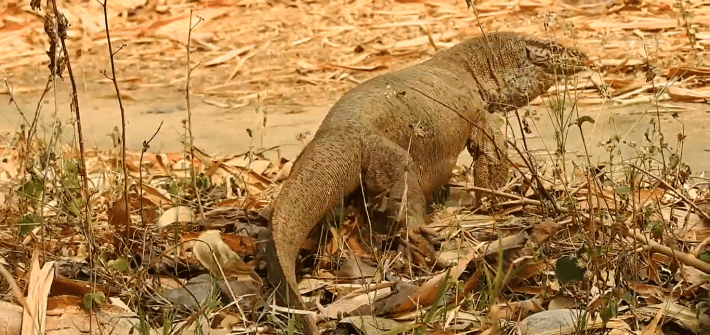
Pre-historic in its appearance, the monitor lizards remind one of a miniature dinosaur of the bygone eons. By lizard standards, the monitor lizards are large creatures. There are approximately 80 species of monitor lizards found in Africa, Asia and the Oceania. While the largest of the monitor lizards is the three meter long Komodo Dragon, […]
A Checkered Keelback hunting a frog at Jim’s Jungle Retreat

Checkered Keelback is a medium-sized non-venomous snake found in South Asia, Southern China and South-east Asia. It is aquatic in behaviour and can commonly be seen in the forested streams, rivers, ponds and similar waterbodies in Corbett Tiger Reserve. There is a good presence of Checkered Keelback in the waterholes of Jim’s Jungle Retreat. Its […]
World Migratory Bird (spring) Day
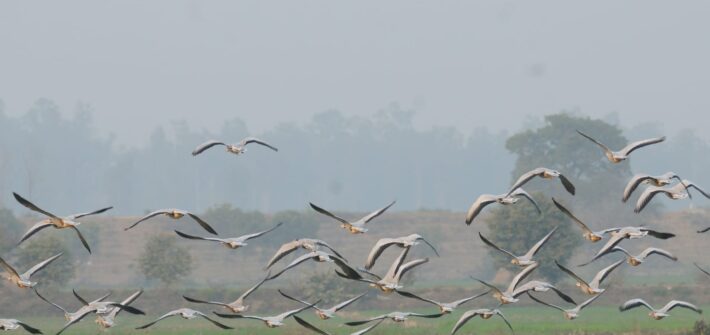
There are hundreds of species of birds that cross the Himalayas during autumn/winter period and spread across the length and breadth of the country. During early spring, birds start moving northwards towards their breeding grounds on the high Himalayas or in the regions across. This phenomenon is known as Spring Bird Migration. Corbett Tiger Reserve […]
A naturalist describes a surprise sighting of a Tiger
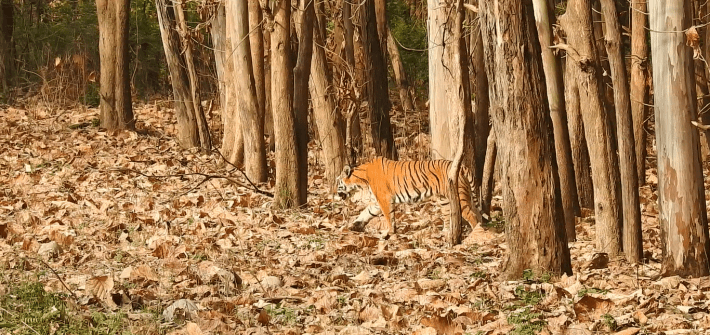
It was a leisurely morning safari with no agenda of finding anything in particular. We were happy looking for birds and talking about the funnel-web spiders and the tinder fungus, locally known as elephant-foot fungus, observing a Jackal tearing the last bits of flesh from a dead monkey and an Ashy Drongo indulging in aerobatics […]
State of panic
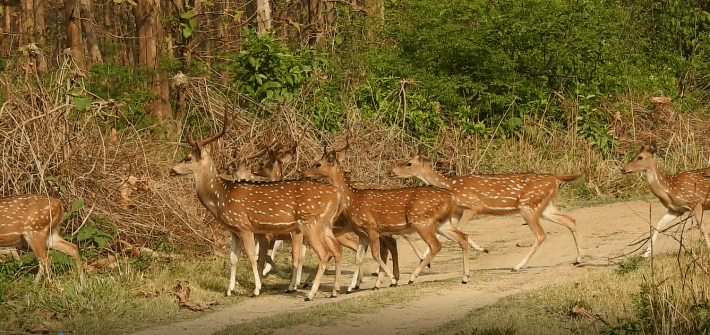
The Spotted Deer are blessed with amazing senses of smell, hearing and sight. When a predator is on the move, the deer can smell it from a great distance when the wind direction is correct. The ears of the spotted deer are large and can be moved in all directions to capture the slightest sound […]
A butterfly that smells with its legs
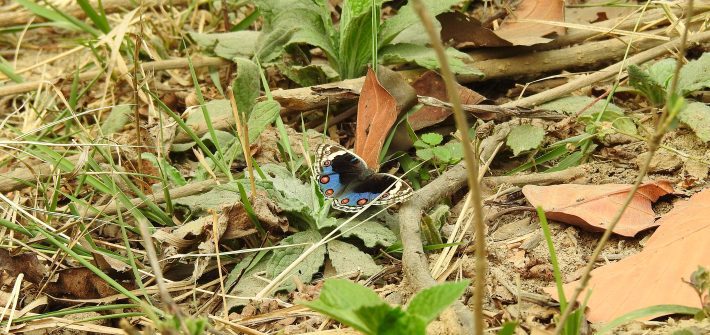
Blue Pansy is medium-small butterfly with a wingspan of 45-60 mm. It is distributed from Africa to south and south-east Asia and into Australia with over 25 different races found across its range. Though a common butterfly of north India, it is not a common species found in Corbett Tiger Reserve and surrounding areas, where […]
Tiger Streams
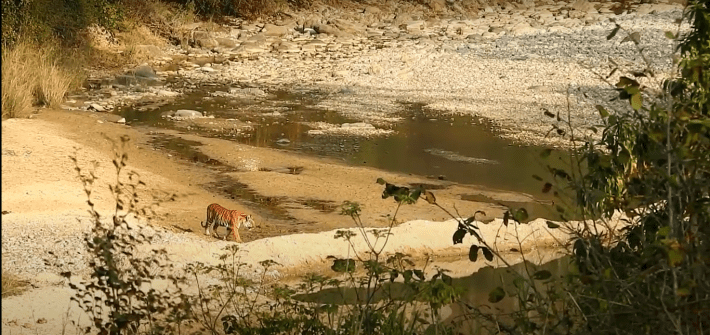
Tigers are highly territorial and aggressive when it comes to protecting their territories. In summer months, the competition for territorial claims on the waterbodies including forest streams and waterholes reaches a mad frenzy. Tigers depend heavily on water sources for their survival during summer and fiercely fight for these prized real estate wilderness spots. A […]
Tigress crossing the road at Corbett Tiger Reserve
Corbett Tiger Reserve has the largest population of tigers for any single reserve, with more than 200 counted during the last census. In summer, the Tigers have a great need for water and move around in their territory in search of water sources. This is the time of the year when Tigers are frequently seen […]
Monsoon Magic at Jim_s Jungle Retreat
Monsoon Magic at Jim’s Jungle Retreat – Brahminy Starling (Sturnia pagodarum) Brahminy Starling is a resident breeding species in India and Nepal. It occurs during summer in Pakistan and migrates in winter to Sri Lanka. It can be seen in small flocks in open areas including cultivations, grasslands, dry forests, scrub jungle and near human […]
Barred Buttonquail Turnix Suscitator
Buttonquails resemble true quails, though they belong to an entirely different family ‘Turnicidae’. Barred Buttonquail occurs across India, south China, and south-east Asia. In the Himalayas, it is known to be distributed up to 2500m. The species is also known as ‘Common Buttonquail’. In Corbett Tiger Reserve, Barred Buttonquail occurs in grassland and scrubland habitat […]
Yellow-Throated Marten in Dhela Tourism Zone
Yellow-Throated Marten in Dhela Tourism Zone, Corbett Tiger Reserve The Yellow-throated Marten (Martes flavigula) is the largest Marten occurring in the old world. Territorial in nature, it actively patrols its territory and may cover upto 20 km during the course of a single day & night. Known to hunt both on the ground and in […]
Butterfly Season at Jim’s Jungle Retreat
Butterfly Season at Jim’s Jungle Retreat Lycaenidae is the largest family of butterflies with more than 6000 species found across the world. In India there are more than 440 species of butterflies belonging to this family. Most of these species have blue upperparts and hence these are called ‘Blues’. Rounded Pierrot is a tiny butterfly […]
The Water Truce | Jims Jungle Retreat
Tigers have their origin in the colder regions across Himalayas. The species spread southwards from the Palearctic region and arrived in India about 12000 years ago, entering from the north-east India and spreading throughout the length and breadth of the country. It has yet not fully adapted to the hot and humid conditions of Indian […]
Tigress at Jhirna, Corbett Tiger Reserve
Tigress at Jhirna, Corbett Tiger Reserve On a drive to Jhirna tourism zone of Corbett Tiger Reserve, sometime during the month of February 2019, we came across fresh footprints of a large tigress and as we were waiting and listening to the alarm calls of Grey Langur, we heard a loud call of the tigerss. […]
Don’t Step on a Bee Day
Don’t Step on a Bee Day (10th July 2019) Bees belong to family ‘Apidae’ that includes Honeybees belonging to genus ‘Apis‘. Honeybees are eusocial in nature exhibiting characteristics including highest level of social organization, cooperative brood care, colony consisting of overlapping generations of adults and division of labour into reproductive and non reproductive groups. Worldwide […]
Bengal Bushlark (Mirafra Assamica) at Corbett Tiger Reserve
Bengal Bushlark (Mirafra Assamica) at Laldhang Grassland, Dhela Tourism Zone, Corbett Tiger Reserve Bengal Bushlark has a strong bill, short tail, white supercilium, strong dark streaks on grey upperparts, spotting on upper breast and behind the ear-coverts, warm coloration to underparts and rufous coloration to the wings. It is resident in the Indian subcontinent and […]
